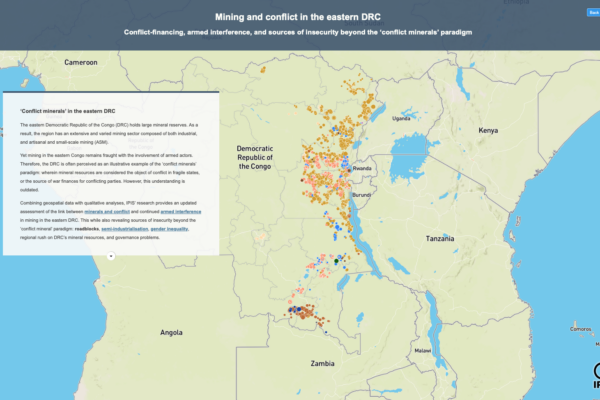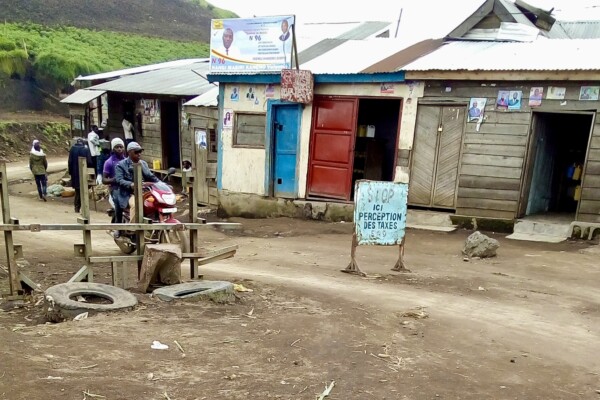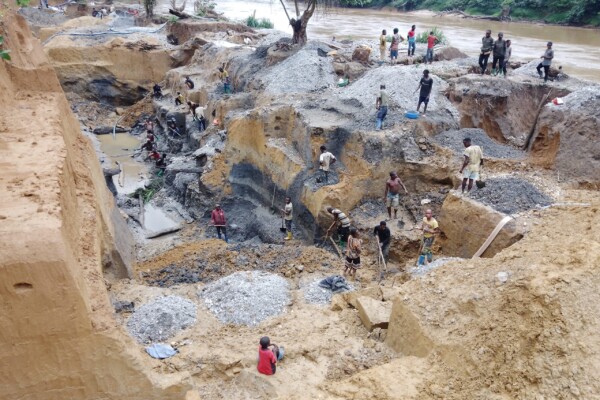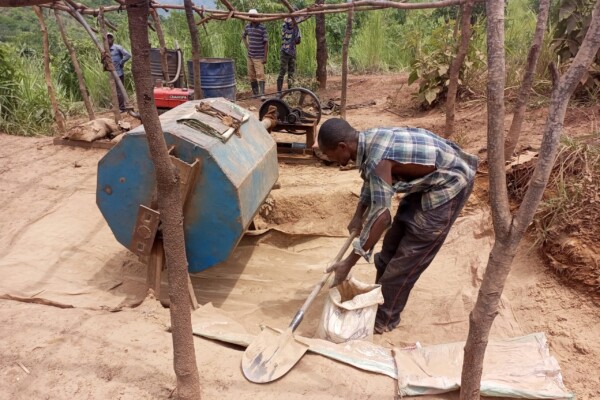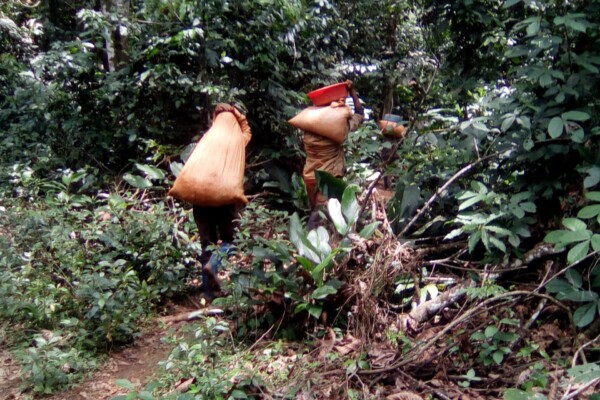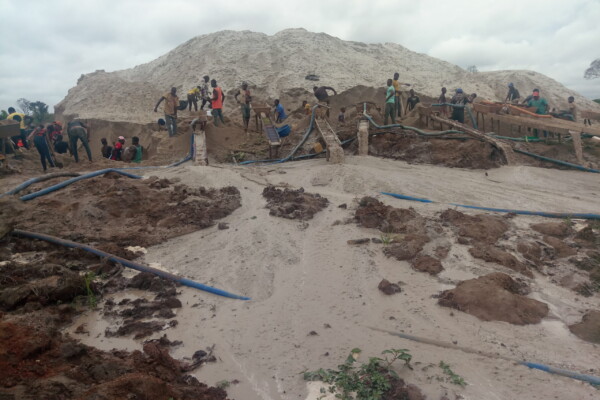Reliable data enable observers, suppliers and policymakers to adress ‘conflict minerals’ trade in Eastern DRC
When effectively monitored and mapped, legal and responsible artisanal and small-scale mining (ASM) supply chains can promote peace and stability while providing livelihoods and contributing to rural development throughout the Great Lakes region. In Eastern DRC, where the ASM sector is largely informal, the sector suffers from criminal activity and corruption. Most of the gold produced via ASM is smuggled out of the country, depriving the DRC government of critical revenue, and is often linked to financing a plethora of armed groups and insecurity in the region. Poor understanding of the informal ASM supply chains in the region risks to undermine the efficiency of responsible ASM efforts and local development in mining areas.
“Understanding artisanal mining supply chains and conflict financing in DRC” is a project implemented by IPIS and USAID as part of USAID’s Integrated Land and Resource Governance (ILRG) project. The two-year project is set to obtain up-to-date and accurate information related to conflict financing, due diligence, and socio-economic dynamics along artisanal mining supply chains in Eastern DRC.
For the past decade, IPIS has maintained an interactive webmap and dashboard that monitors ASM activities in relation to conflict and exploitation through large-scale primary data collection in remote mining areas, an open data policy, and collaboration with DRC Ministry of Mines for data collection. Users can filter data by time period, province, mineral, mine size, mineral traceability, official qualification status, presence of state services, armed groups, as well as reported armed interference, presence of child labor and mercury use. More on the dashboard can be found here.
The current project will build from and update these datasets by targeting the Eastern DRC provinces of Ituri, Tshopo, Haut-Uele, North and South Kivu, Maniema, and Tanganyika. This information is critical to guiding the strategies of the Government of DRC and Congolese civil society in their partnership with USAID to address the many challenges in the country’s natural resources sectors.
The four main objectives of the project are:
- To map and collect data from 550 ASM mining sites and supply chains in Ituri, Tshopo, Haut-Uele, North and South Kivu, Maniema, and Tanganyika (Eastern DRC)
- To make this data publically available through IPIS’ interactive webmap
- To sharpen investigation of conflict financing and dynamics
- To disseminate results to increase the understanding of linkages between mineral trade and insecurity
- Dates: June 2021 – May 2023
- Location(s): DRC
- Research Programme(s): Natural Resources
- Funder(s): USAID
- Partner(s): USAID, Tetra Tech, SAEMAPE (Ministry of Mines)
- Activities: field research
- Deliverable(s): reports, interactive webmap, presentations
Project Coordinator
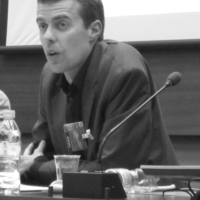
Mining and conflict in the eastern DRC: Conflict-financing, armed interference, and sources of insecurity beyond the ‘conflict minerals’ paradigm – An interactive story map
News
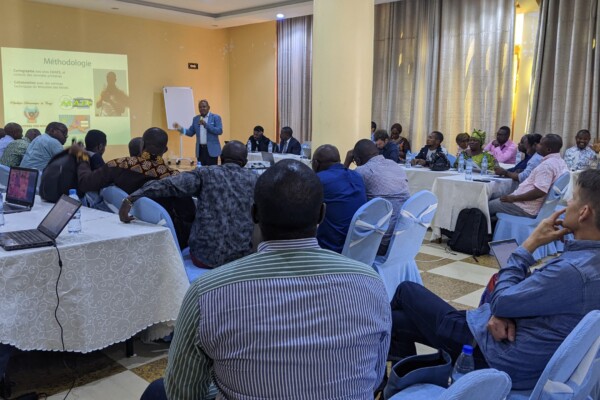
Sharing the results of two years of research into eastern DR Congo’s artisanal mining sector
Since 2021 and in partnership with USAID and the Congolese Ministry of Mines (through its technical service SAEMAPE), IPIS has been undertaking a large-scale project to map and analyse artisanal mining supply
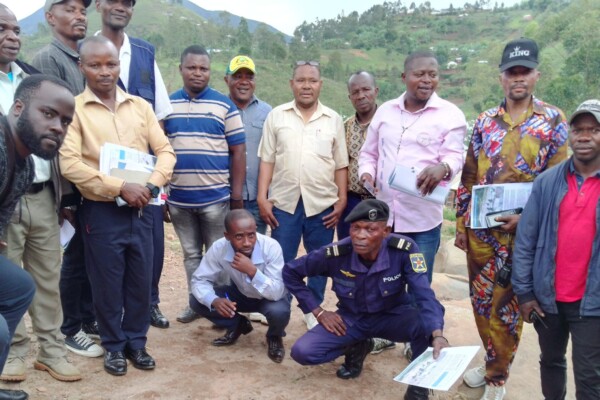
Feedback session: Sharing the results of the data collected in Walungu, South Kivu
Since 2021, IPIS undertakes another large-scale mapping effort of artisanal and small-scale mining (ASM) sites in the eastern Democratic Republic of Congo (DRC), – in partnership with USAID and the Congolese Ministry of Mines

Feedback session: Sharing the results of the data collected in Shabunda
Since 2021, IPIS undertakes another large-scale mapping effort of artisanal and small-scale mining (ASM) sites in the eastern Democratic Republic of Congo (DRC), – in partnership with USAID and the Congolese Ministry of Mines
Related Publication(s)

This project was made possible by the support of the American People through the United States Agency for International Development (USAID).


